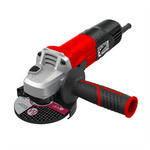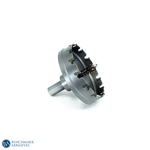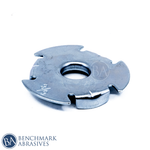
Step-by-Step Guide: Cleaning and Prepping Metal for Welding

Preparing metal for welding is the very first step that significantly affects the quality, strength, and durability of the final weld. Avoiding appropriate cleaning and preparation can cause contaminants, including rust, scale, oil, grease, and paint, into the weld pool which further leads to porosity, cracking, poor fusion and a weaker joint.
Therefore, regardless of skill level or the particular welding method being used, each welder needs to comprehend and carefully carry out the required cleaning and preparing operations. In addition to guaranteeing a good weld, this procedure makes welding safer and more effective. We'll go over how to clean metal and get it ready for welding in this blog.
Required Tools and Materials
Here's a list of tools that you'll need:
- Wire Brushes and Wheels: For removing rust, scale, and debris from metal surfaces.
- Grinders and Sandpaper: Use these to smooth rough edges and remove persistent coatings or rust spots.
- Solvents: In order to guarantee a clean surface, solvents are necessary for eliminating oil, grease, and other residues.
- Clean Rags or Cloths: Useful for wiping down surfaces after cleaning to remove any remaining particles or chemicals.
- Safety gear: Masks, goggles, and gloves to shield you from chemicals, dust, and debris.
- Sanding Disks or Pads: For refining surfaces and achieving a smooth finish before welding.
Steps For Metal Cleaning and Preparation For Welding
The following are the steps involved in the cleaning and preparation of metal welding:
Step 1: Remove Heavy Contaminants
The first step in metal cleaning and preparation for welding involves the elimination of heavy contaminants that can substantially affect the welding process and the integrity of a weld. This usually involves the following elements, such as thick layers of rust, mill scale, peeling paint, and any other significant debris embedded in the surface of the metal. These are some effective methods for removing heavy contaminants.
- Wire Brush: To remove loose debris, thick rust, scale, or paint, use a manual or powered wire brush. Prefer a brush made of a harder material than the base metal. To prevent contamination, especially for aluminum, use a stainless steel brush.
- Grinder with flap disc or grinding wheel: Use a grinder with a flap disc or grinding wheel to remove thick contamination, mill scale, or rust, which is highly aggressive for heavy material removal. Begin with a finer grit. Be cautious not to eliminate too much base metal.
- Plasma cutter: A plasma cutter can make clean cuts if thick metal needs to be sliced frequently before welding.
- Abrasive Blasting: This technique is highly effective for removing severely rusted materials that cannot be cleaned with other techniques. Be careful, as abrasive residue can trap metal particles, leading to corrosion, especially on aluminum. Afterward, clean it thoroughly with acetone.
Step 2: Degrease and Clean Remaining Residue
After eliminating the heavy contaminants, the next crucial step in preparing metal for welding is to completely degrease and clean any leftover debris. Even after grinding or wire brushing, tiny particles like grease, oils, dirt, fingerprints, and cutting fluids may remain on the surface of the metal. While welding, these remains can evaporate and introduce pollutants into the weld pool, which results in weakening the weld and porosity. Use the following methods to overcome these problems:
- Solvent Cleaning: to get rid of oil, grease, and other minor contaminants, use a clean cloth and an appropriate solvent including acetone or a commercial degreaser. also make sure there is enough ventilation while using solvents.
- Chemical Cleaners: Use chemical cleaners such as pickling paste or acidic cleaners for removing tough contaminants. when using chemicals, ensure to follow the safety measures and manufacturer's guidelines for more safety. These frequently call for neutralization and appropriate waste disposal.
- Electrochemical cleaning: This technique especially works for stainless steel, eliminates oxides and contaminants with the help of electricity and a cleaning solution. To increase corrosion resistance, certain machines can even passivate the surface.
Step 3: Prepare The Joint Area
Now that the metal surfaces are clear of stubborn pollutants and grease, the focus turns to preparing the joint area where the weld will be deposited. This process includes the following stages:
- Clean within 1 inch: Thoroughly clean both sides of the metal surface within an inch of the planned weld junction.
- Edge Preparation: For increasing the weld penetration and strength, beveling or chamfering the edges of thicker materials. Utilize a grinder for this. Make sure the edge is clean and consistent.
Step 4: Final Cleaning
It is strongly advised to do a comprehensive final washdown of the weld joint and surrounding areas as the last step before striking the arc. Even after careful washing and handling, there are chances that any traces of hand oils or airborne particles may remain on the prepared surfaces. These residues can be successfully removed with a complete and rapid wipe-down by using a clean, lint-free cloth soaked in a fast-evaporating solvent like acetone.
This simple, basic step makes a huge difference in the weld quality. Make sure that the acetone has completely evaporated before starting the weld to prevent any trapped solvent that could lead to porosity within the weld bead.
Crucial Factors To Consider While Cleaning And Preparing Metal
The following are some important factors to consider:
- Welding Process: The required level of cleanliness varies by welding process. For example, TIG welding needs the cleanest surfaces, while stick welding can tolerate minor contaminants.
- Type of Material: Different metals may need certain cleaning techniques. For example, to avoid cross-contamination and corrosion, do not use the same abrasive tools on carbon steel and stainless steel. The oxide coating on the aluminum has to be removed.
- Safety: Ensure to wear proper safety gear, including face shields, glasses, masks, or respirators, when cleaning metal, especially when dealing with chemicals, grinders, or dusty environments.
- Drying Time: To prevent porosity and other weld flaws, make sure the metal is thoroughly dry before welding if you plan to use any wet cleaning techniques like solvents or chemical cleaners.
These procedures will help you make sure your metal is cleaned and prepared correctly, which will result in stronger, better welds.
Conclusion
For a strong and long-lasting weld, the metal must be properly cleaned and prepared. By removing rust, debris, and contaminants, you can prevent potential welding defects and improve the quality of your work. Following a systematic approach with the right tools and techniques enables you to create a clean, smooth surface ready for welding. Prioritizing these steps is the foundation for a successful project, whether you are working on a small repair or a large fabrication.



































































